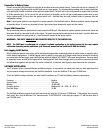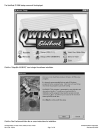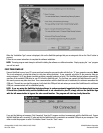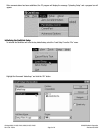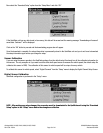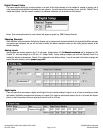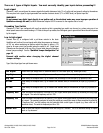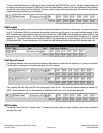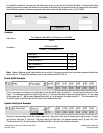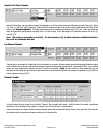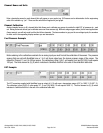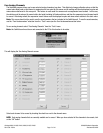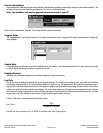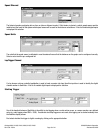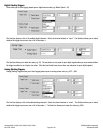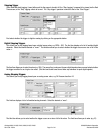
Page 14 of 44
Catalog #91001, 91003, 91004, 91005, 91007, 91009
Rev. 2/06 - RS/mc
©2006 Edelbrock Corporation
Brochure #63-0282
To complete the calibration, you must know the rolling radius of your rear tire and the Final Drive Gear Ratio. To determine the rolling
radius of your rear tire, measure the distance from the center of the wheel to the ground with the car fully loaded and on level ground.
Use the following formula to determine appropriate table value to enter into the calibration table. (See CD-ROM).
Calib Value
Max MPH
Final Ratio Radius
Example:
Calib. Value =
Turns/Mile =
Note: Choose a Maximum speed higher than the car can achieve. This number does not have to accurately represent the actual top
speed of the car. To simplify the calculations, pick an even number like 200 or 250, etc.
Brake On/Off Example
This is an example of recording a pure digital signal and is the default setting for channel 4. The input type must be set to “Pure
Digital”. The calibration numbers are simply (0), (0) and (I), (I). This means that with the input not triggered (input of “0”), the output
for the graphs read “0”. With the input triggered (Brake lights “on” in the example), the output reading is “I”. The third element is (0),
(0) which indicates to QwikData that this is the end of the calibration table data.
Injector Duty Cycle Example
Duty cycle is the percentage of time that a signal is high or low. Duty cycle is often used to characterize an injector output. The input
type is set for “Duty High” or “Duty Low”. (Duty Low is simply 100-Duty High). The calibration numbers are (0), (0), and (100), (100).
The third element is (0), (0) which indicates to QwikData that this is the end of the calibration table data.
No. of Magnets x Max MPH x Final Ratio x No. of Turns/Mile
360000
Max MPH = 200
Tire Radius = 12.5
Final Drive Ratio = 4.10
No. of Magnets = 2
Result= 3.67
63360 (Inches/Mile)
Rollout (2 .x Tire Radius x 3.14)



